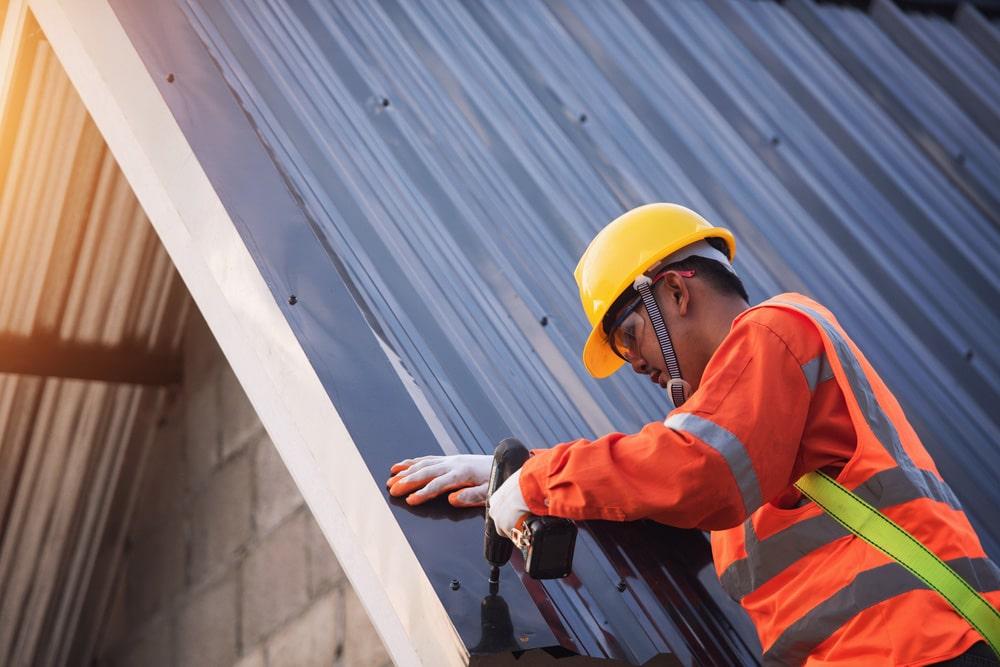Are you contemplating a roof makeover and wondering, “Can I install a metal roof over existing shingles?” If you’re on the fence about upgrading your roof, this article will provide you with valuable insights into the feasibility, benefits, and potential drawbacks of installing a metal roof over your existing shingles.

When it comes to upgrading your roofing system, homeowners often seek cost-effective and efficient solutions. One popular question that arises is whether it’s possible to install a metal roof over existing shingles. This article will explore the practicality of this approach, shedding light on the advantages and considerations associated with this type of roof installation.
Understanding the Process: Can I Install A Metal Roof Over Existing Shingles?
Installing a metal roof over existing shingles can be a viable option in certain situations. The process typically involves a thorough inspection of the current roof to ensure it can support the additional weight of the metal roofing material. While the concept might sound straightforward, it’s crucial to delve into the intricacies to make an informed decision.
Pros of Installing A Metal Roof Over Existing Shingles:
- Cost-Efficiency: One of the primary benefits of this approach is cost savings. The installation process is often quicker and more economical compared to a complete roof tear-off.
- Insulation Improvement: Adding a metal roof layer can enhance the insulation of your home, contributing to better energy efficiency.
- Environmentally Friendly: Choosing this method reduces the environmental impact associated with removing and disposing of old shingles, making it a more sustainable option.
Cons to Consider:
- Weight Concerns: While metal roofing is generally lightweight, adding another layer can increase the overall load on your roof structure. It’s crucial to assess whether your existing structure can bear the additional weight.
- Voiding Warranties: Some roofing material warranties may be voided if the new installation is layered over existing shingles. It’s essential to check with the manufacturer for specific guidelines.
- Potential for Trapped Moisture: Moisture trapped between the old shingles and the new metal roof can lead to issues such as mold and rot. Proper insulation and ventilation measures are essential to mitigate this risk.
Installation Process: A Step-by-Step Guide
- Roof Inspection: Begin by assessing the condition of your existing roof. Ensure there are no significant issues such as leaks, rot, or structural damage.
- Structural Evaluation: Consult with a roofing professional to evaluate the structural integrity of your roof. This step is crucial in determining whether your existing roof can support the additional weight.
- Preparation: Clean the existing roof surface thoroughly and make any necessary repairs. Proper preparation is key to the success of the new installation.
- Installation of Underlayment: Adding an underlayment is essential to prevent moisture penetration and improve insulation. It acts as a protective barrier between the old shingles and the new metal roof.
- Metal Roof Installation: Once the groundwork is laid, proceed with installing the metal roofing panels according to the manufacturer’s guidelines.
- Finishing Touches: Complete the installation with finishing touches, such as trim and flashing, to ensure a seamless and watertight roof.
Conclusion:
In conclusion, the question, “Can I install a metal roof over existing shingles?” has a nuanced answer that depends on various factors. While this approach offers cost savings and environmental benefits, it’s crucial to carefully assess the condition of your existing roof and consult with roofing professionals to ensure a successful installation.
Whether you’re motivated by cost-effectiveness, energy efficiency, or sustainability, understanding the pros and cons of installing a metal roof over existing shingles is essential for making an informed decision. If done correctly, this method can breathe new life into your roof, providing long-lasting protection and aesthetic appeal for years to come.



Leave a Reply